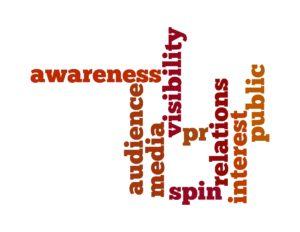 NBC’s Today show devoted a segment this week to Alzheimer’s disease, with a “PR executive” who sincerely advocated for her cause (she noted that her mother had suffered from Alzheimer’s), but struck an odd note when she said that the disease’s “negative stigma” is due to a perception that it’s a disease that “old people get.” And she said that naming a celebrity representative will help–a stereotypical staple of public relations campaigns.
NBC’s Today show devoted a segment this week to Alzheimer’s disease, with a “PR executive” who sincerely advocated for her cause (she noted that her mother had suffered from Alzheimer’s), but struck an odd note when she said that the disease’s “negative stigma” is due to a perception that it’s a disease that “old people get.” And she said that naming a celebrity representative will help–a stereotypical staple of public relations campaigns.
With that, she missed an opportunity to communicate effectively about her cause. All of us plan to grow old, so I’m not sure that’s such a negative. More fully, however, I’m not certain this PR expert embraced the notion that negative stigmas are entirely rational for a feared and little understood disease. Her response failed to incorporate at least a brief informative message to help people understand, clearly a major purpose of the campaign in which she is involved. Even with the time constraints of morning TV, boiling it all down to a reference to celebrity representation also minimized the power of good public relations, that at its best can move people to act in positive ways: to eat better, to come together to help others, to fight injustice, to buy and use products that are of benefit, and yes, to fight disease.
So what makes a good PR person? Here are five attributes.
Clarity
A good PR person is an excellent writer and speaker who knows how to get ideas across in a variety of media. Clear writing is clear thinking. A great public relations representative also keeps these clearly voiced ideas in mind when interviewed. The ability to reframe an answer with the key message in mind is prized by politicians. It also serves PR clients well.
Honesty
PR, frequently misrepresented as “spin,” is about putting the best light on a situation and portraying issues, companies, and organizations, in a positive way. That doesn’t mean lying. A good PR person never lies, and in fact, helps a client tell the truth even when it’s not so pleasant.
Thoroughness
A good PR person does their homework and has a healthy skepticism. A good PR person checks and double-checks the facts and veracity of any statement and makes sure it can be properly sourced—even when the fact is provided by the client.
Creativity
A good PR person connects the client’s product, idea, cause, and key message to the audiences they seek to reach. A campaign I was involved with around endangered historic buildings is a great example. Instead of pitching a wonderful old Southern Maryland mansion as a priceless piece of architecture that might disappear, we pitched the fact that the descendant of the mansion’s owner, a slave holder, and the descendant of a slave who worked on this property were both involved trying to save this house. We pitched it to a reporter at the New York Times who covered race not architecture and that coverage lead to pieces on Today and CBS Sunday Morning—which generated support and funding to help keep this historic treasure around for future generations.
Awareness
A good PR person is engaged in the world and keeps up with the news in the clients’ industries as well as current events and trends and developments within our own “industry.” That means understanding social media and its implications. PR’s job is to bring the outside in as well as the inside out. We have to help our clients understand how their work fits into a larger context so that they can participate effectively in the bigger conversations that are taking place about their issues, causes or products.
What do you think are the qualities of good PR practitioners?

